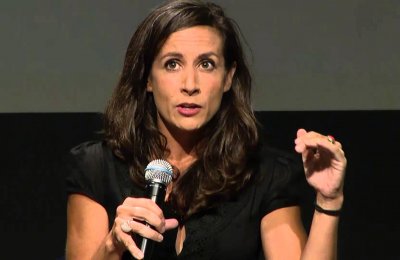Third-year doctoral student George Villanueva headed the Metamorphosis Project's acquisition of a $380,000 grant to help plan sustainable communities in northeast Los Angeles.
"I've always wanted to have a real-world impact on local communities and to help guide policy that can better develop neighborhoods," said Villanueva, who will be the grant's research coordinator. "I've done field work in urban areas, so I'm excited to be able to link research and theory to applied community work."
Villanueva will work directly with the grant's principal investigator, Sandra Ball-Rokeach, who is director of the Metamorphosis Project and a communication professor at USC Annenberg. The grant is part of the larger $2.25 million North East Los Angeles Collaborative grant given by the federal grant program Partnership for Sustainable Communities, headed by the U.S. department of Housing and Urban Development (HUD) in collaboration with the U.S. Department of Transportation (DOT) and Environmental Protection Agency (EPA). The partnership aims to reduce barriers to achieving affordable and sustainable communities.
"It's exciting to work collaboratively not only within the university but also with different organizations and agencies throughout the area," Villanueva said.
Among the city departments working within the NELA Collaborative will be the Community Redevelopment Agency of Los Angeles, the Department of City Planning and the Department of Transportation. Metamorphosis will also work with community partners such as the Workforce Investment Board, Urban Environmental Policy Institute, the Hollywood Community Studio and the Worker Education and Resource Center. The goal is to create an implementation strategy and plan for sustainable urban redevelopment that is guided by inter-agency city collaboration, civic engagement, and community-based research driven work.
Together, the goal of the NELA Collaborative is to integrate planning efforts, coordinate strategic investments and implement a comprehensive revitalization strategy for NELA communities that promotes sustainable development and helps these communities thrive.
"This is a complex consortium," Ball-Rokeach said. "It is a great opportunity for Metamorphosis to work with key players in local communities to make a real difference. This is part of a much larger trend of the Metamorphosis Project to take what we’ve learned through theory and research and put it into action.
"Our work is not just in academic journals. It’s in use."
Villanueva said their work will engage nearby community organizations and residents who live in the northeast Los Angeles areas of Elysian Valley, Glassell Park, Atwater Village and Cypress Park.
"A lot of our community and civic engagement research will be approaching these populations to see how they would like to see their community develop to be sustainable in the future," he said. "Being sustainable is more than just making sure redevelopment is linked to physical development like building streets, transportation and buildings. People need access to jobs, social services, food, education, technology and nature, among many other things."
Villanueva, who grew up in east Hollywood, Calif. and went to UC Santa Barbara for undergraduate studies, said the opportunity to work with Ball-Rokeach on the Metamorphosis Project was one of the main reasons he wanted to attend USC Annenberg.
"I’m still amazed at how much as a student I have learned from her," he said. "She amazes me every day with her breadth of knowledge and insight into research and academia and how it should be applied. I respect how she’s been open with her work and able to adjust to changing times in urban areas that, like the rest of the world, are experiencing rapid changes."
About the Metamorphosis Project
Metamorphosis' mission is to understand the transformation of urban community under the forces of globalization, new communication technologies, and population diversity so that our research can inform practitioner and policy maker decisions. The site of study is Los Angeles and its many ethnic communities of both new and settled immigrants.
Metamorphosis has developed a communication infrastructure perspective that privileges a grassroots understanding of how people construct and re-vitalize their residential communities, and how they go about solving everyday problems of family, health, inter-group relations, and ethnic identity. The challenge is to make the communication infrastructure of daily life visible so that it can be employed by residents, practitioners, and policy makers to improve the quality of family and community life.
Metamorphosis Project
George Villanueva
Sandra Ball-Rokeach




